ETH Zurich at WEF 2017 in Davos: “Magic through Technology”
ETH Zurich is presenting its latest research findings in a public exhibition at the World Economic Forum 2017. ETH’s début WEF appearance was launched with a meeting with politicians, public authorities and businesspeople from the canton of Grisons.
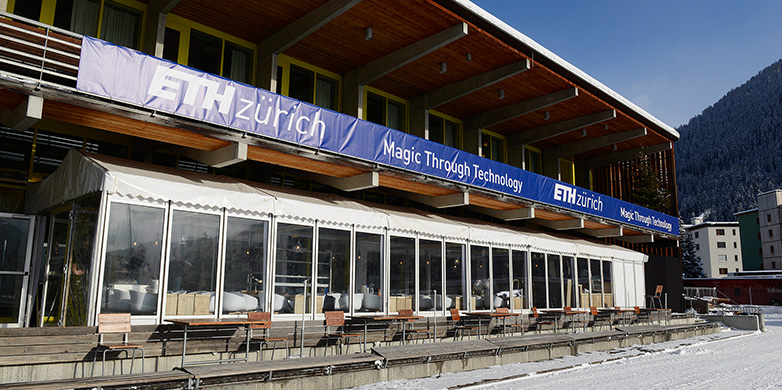
In his welcome address, ETH President Lino Guzzella emphasised the many connections between ETH and the canton of Grisons, including a number of impressive constructions such as the Sunniberg Bridge near Klosters, designed by ETH engineer Christian Menn. He also mentioned the research conducted at Alp Weissenstein, the Villa Garbald in Castasegna, Bergell, and the recently launched concept for a transalpine railway between Scuol (CH), Mals (IT) and Landeck (A). In addition, ETH architecture student Ursin Huonder has produced plans and a model for improvements to the Lower Engadine village Tschlin, home to just 300 residents. Lino Guzzella: “One of the reasons we've come to Davos is to explore and deepen opportunities for collaboration with the canton of Grisons.”
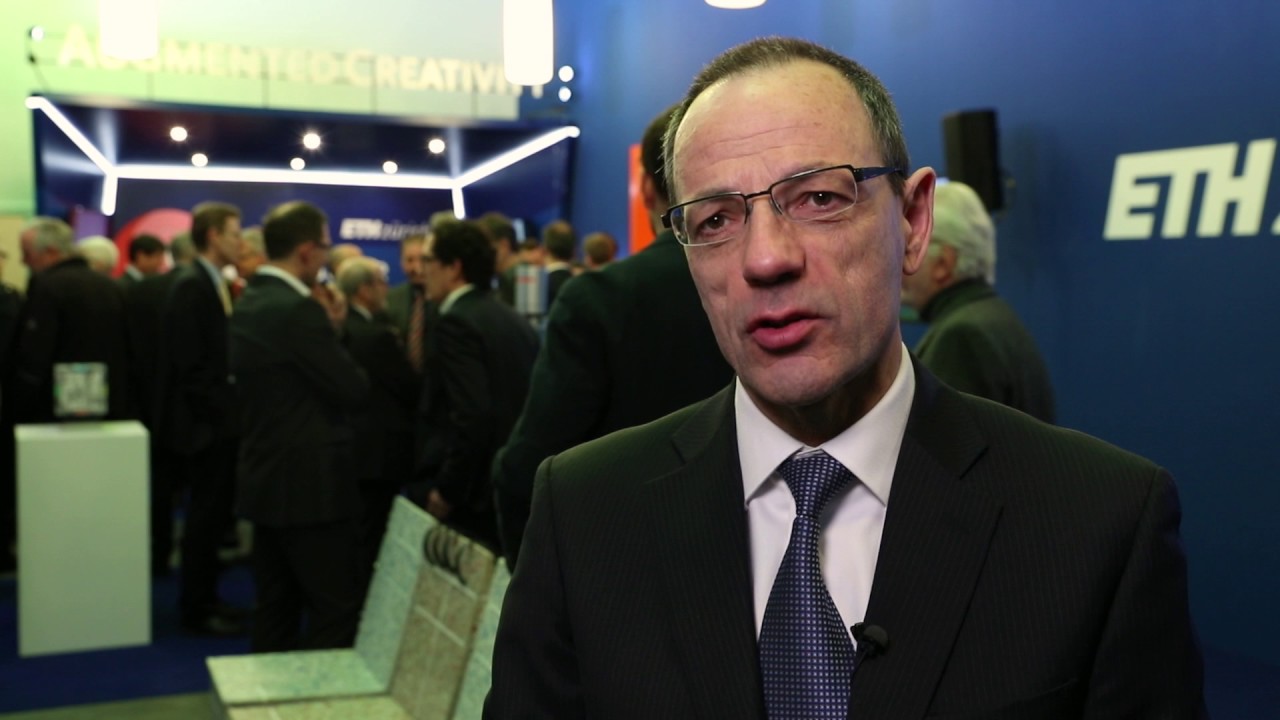
International exchange
The ETH delegation is also using the World Economic Forum 2017 as an opportunity for exchange with the huge range of WEF participants from around the world. There are numerous meetings on the agenda with representatives of various elite universities, international associations and industries.
ETH is also inviting selected guests to two evening receptions at Time-Out, the restaurant of the Davos ice hockey team. These events are dedicated to robotics and gaming technology as well as the new research area of media technology, which ETH will be establishing along with the Swiss media concerns Tamedia, Ringier, NZZ and SRG.
Latest gaming technologies
Alongside official ETH appearances at closed events and WEF workshops, the Zurich university is presenting its latest research findings from the fields of game development and robotics in a two-day public exhibition at Time-Out. ETH President Guzzella underlined the public dimension of ETH’s appearance at WEF: “We invite the general public to visit our exhibition and we look forward to interesting encounters and lively discussions in Davos.”
The free exhibition is titled “Magic through Technology”, where researchers from ETH Zurich lead visitors through the world of new digital games and other innovations. These games include a digital race in which the difference between winning and losing is decided by the players’ control over their own brain waves. The game premiered successfully last October at Cybathlon, ETH Zurich’s competition for people with disabilities who use assistive technology.
ETH professor Bob Sumner’s digital colouring book brings drawings created on a tablet to external pagethree-dimensional digital lifecall_made. Also making an appearance is a magic cube by the name of “Cubli”, which can balance on one corner, jump or go into a controlled fall.
Robots in the kitchen
The ETH exhibition is also an opportunity to see some of ETH Zurich’s innovative new robots in action. Exhibits such as a robot that can move unassisted through large crowds of people and anticipate human movement patterns strengthen ETH Zurich’s reputation as the “Silicon Valley of robotics”.
Science and cooking combine in external pageTastelabcall_made, which is bringing its high-tech cookware to a tent in front of Time-Out today and tomorrow. ETH physicist Susanne Tobler and her colleagues apply the latest findings and methods from the scientific world to preparing dishes, resulting in a true adventure for the senses.
Highlights: ETH Zurich at WEF 2017
 The Time-Out restaurant – usually the restaurant of the Davos ice hockey team – is serving as an exhibition venue for ETH Zurich during the WEF 2017.
The Time-Out restaurant – usually the restaurant of the Davos ice hockey team – is serving as an exhibition venue for ETH Zurich during the WEF 2017. Lino Guzzella and ETH student Ursin Huonder (middle) discuss a model for improvements to the Lower Engadine village Tschlin.
Lino Guzzella and ETH student Ursin Huonder (middle) discuss a model for improvements to the Lower Engadine village Tschlin. In conversation: Zurich Cantonal Councillor Thomas Heiniger with Susanne Tobler from Tastelab and Lino Guzzella.
In conversation: Zurich Cantonal Councillor Thomas Heiniger with Susanne Tobler from Tastelab and Lino Guzzella.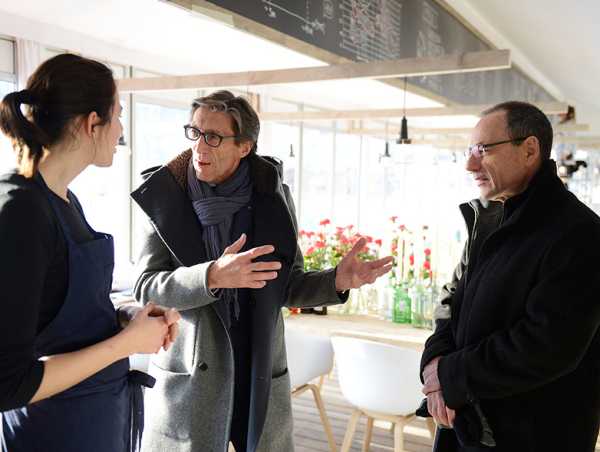 What do the brain waves do? Suzi LeVine, current (for a few more days) US Ambassador to Switzerland, at the Brainrunner game with her husband Eric.
What do the brain waves do? Suzi LeVine, current (for a few more days) US Ambassador to Switzerland, at the Brainrunner game with her husband Eric.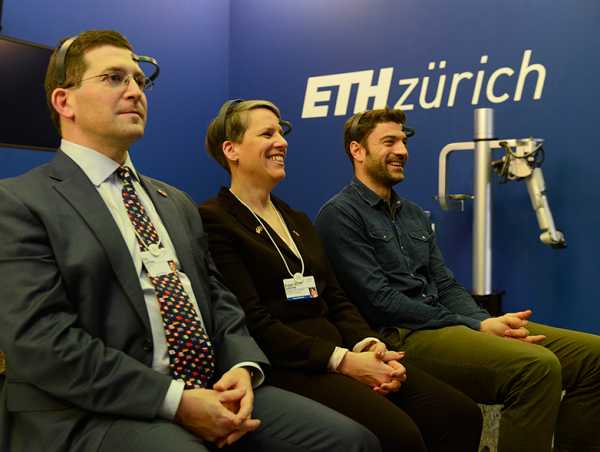 A virtual tour through ETH’s main building with a give-away for Davos guests.
A virtual tour through ETH’s main building with a give-away for Davos guests.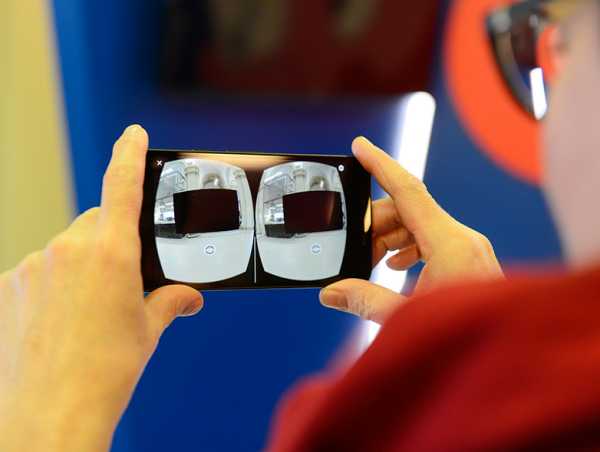 Johannes Flury, President of the Lia Rumantscha (left), with Geoff Richards from the AOFoundation at the Grisons breakfast.
Johannes Flury, President of the Lia Rumantscha (left), with Geoff Richards from the AOFoundation at the Grisons breakfast.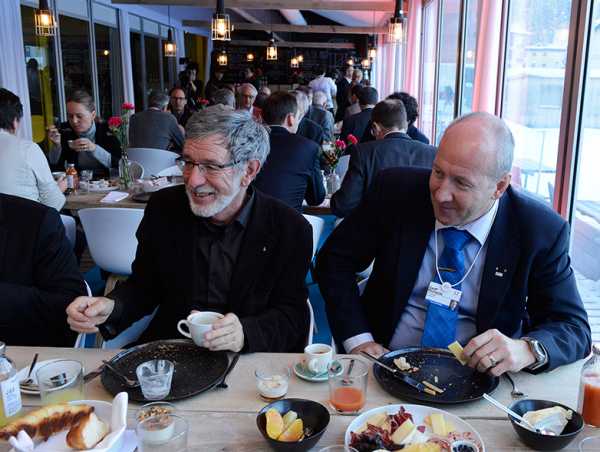 Architecture student Ursin Huonder and architecture professor Günther Vogt present their model for the mountain village of Tschlin to members of the Grisons community.
Architecture student Ursin Huonder and architecture professor Günther Vogt present their model for the mountain village of Tschlin to members of the Grisons community. ETH professor Margarita Chli tries her luck with the magic “Cubli”.
ETH professor Margarita Chli tries her luck with the magic “Cubli”.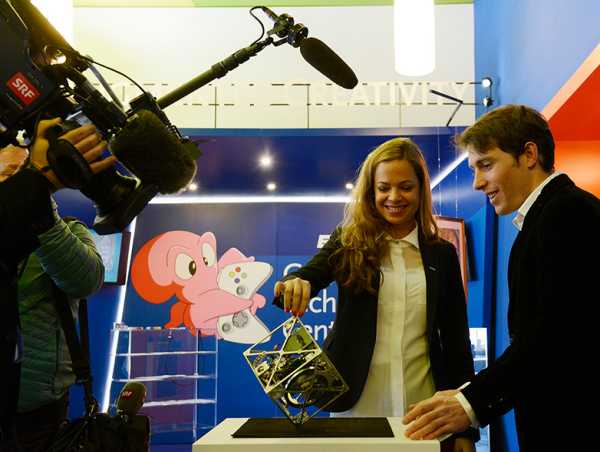 A class from the Davos technical college at the Brainrunner game.
A class from the Davos technical college at the Brainrunner game.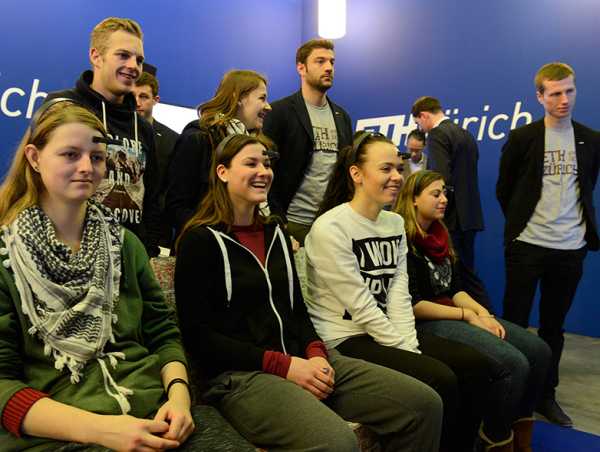 At your service: service robot Igor (left) with Walter Esposito from the ETH Foundation and Tobias Pforr from Repower AG (right).
At your service: service robot Igor (left) with Walter Esposito from the ETH Foundation and Tobias Pforr from Repower AG (right).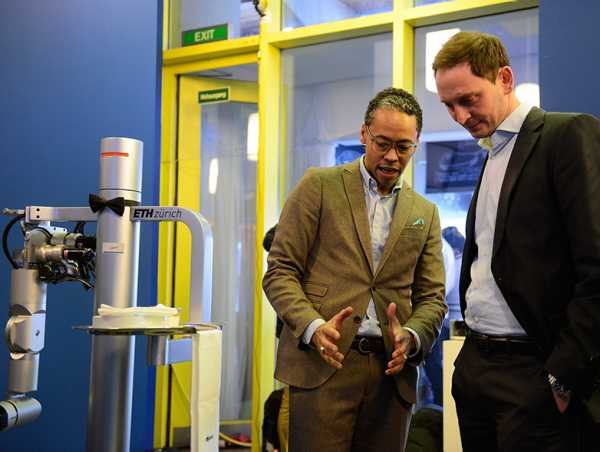 The delegation from Times Higher Education (THE) with Phil Baty (right of Lino Guzzella) was also invited to discussions in Time-Out.
The delegation from Times Higher Education (THE) with Phil Baty (right of Lino Guzzella) was also invited to discussions in Time-Out. ETH Zurich's Game Technology Center demonstrates how animated 3D figures are produced from drawings.
ETH Zurich's Game Technology Center demonstrates how animated 3D figures are produced from drawings.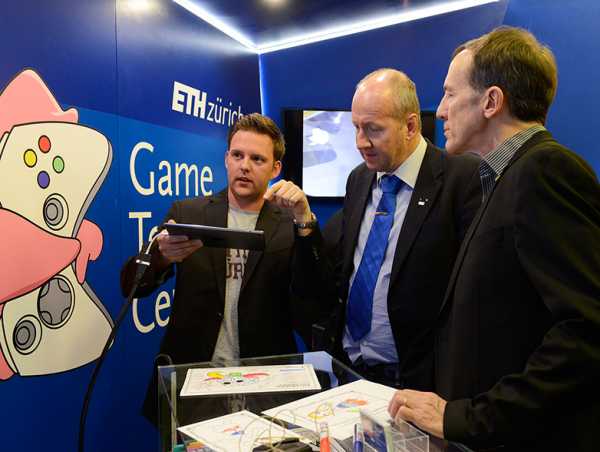
Photographs: ETH Zurich / Andreas Eggenberger
